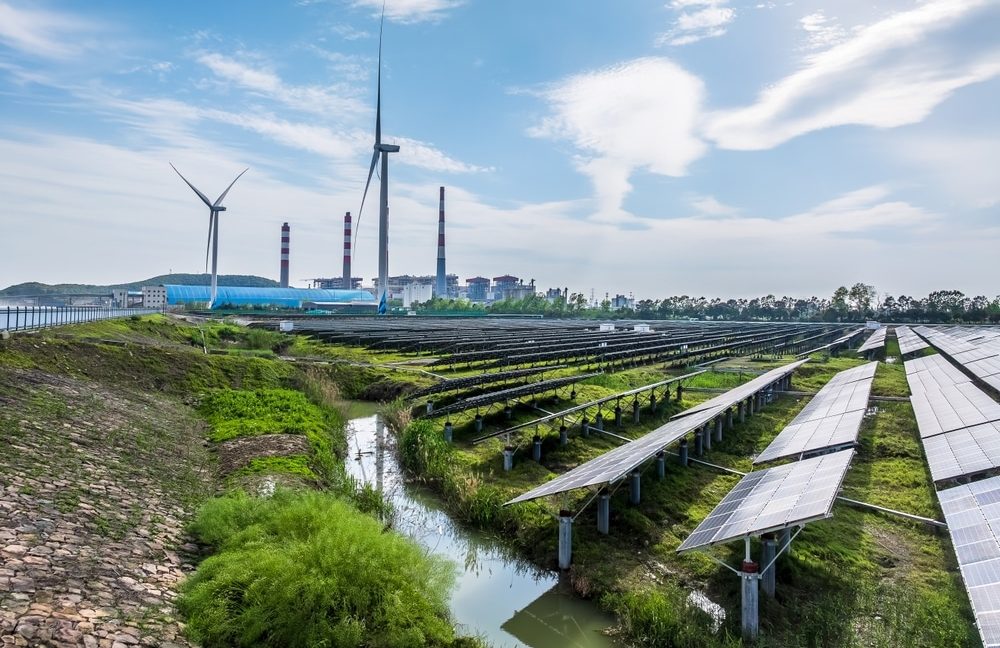The Integrity Council for the Voluntary Carbon Market (ICVCM) has announced that carbon credits issued under existing renewable energy methodologies will not be eligible for its Core Carbon Principles (CCP) designation. This decision affects nearly one-third (32%) of the voluntary carbon market or about 236 million carbon credits.
ICVCM’s Decision Is Based on “Additionality”
The ICVCM’s decision is based on the concept of “additionality,” which asserts that the projects in question might have proceeded without the financial incentives from carbon credits. The Core Carbon Principles are designed to ensure that carbon credits contribute to emissions reductions that wouldn’t have occurred otherwise.
- READ MORE: The Core Carbon Principles
The CCP framework requires that the emissions reductions from carbon credits be additional, meaning they would not have happened without the carbon credit revenue. This principle is applied to eight methodologies, including grid-connected renewable energy generation and biomass energy production. They collectively represent about 236 million credits, or 32% of the voluntary carbon market (VCM).

This low revenue share suggests that carbon credits were unlikely to be a decisive factor in the development of renewable energy plants, especially for large-scale hydro, wind, or solar projects with significant upfront capital costs.
The CCP label now applies only to credits from five vetted programs using approved methodologies.
How Can This Impact the Carbon Offset Market?
ICVCM’s move could severely impact the carbon offset market, which has already shrunk nearly 25% from its 2022 peak, as shown in the chart below. It also highlights ongoing efforts to address criticisms of carbon offsetting, which has been accused of enabling greenwashing.

- SEE MORE: Will This Be The End of Carbon Offsets?
The ICVCM argues that the current methodologies are inadequate in determining if projects would have progressed without carbon credit revenues.
Climate experts have long criticized renewable energy credits, arguing they are ineffective because renewables are already a viable alternative to fossil fuels. Thus, carbon credits often do not influence decisions to develop or expand green energy projects, benefiting developers instead.
In 2022, renewable energy credits made up about 50% of offset purchases, up from 38% the previous year, according to Bloomberg. Major companies like Volkswagen, Etsy, and TotalEnergies have been among those purchasing these credits.
However, investigations have questioned the credibility of many offsets, prompting the ICVCM to impose stricter standards.
Greenlighting New Carbon Project Methodologies
On Tuesday, the ICVCM approved two more methodologies for the CCP label:
- detecting and repairing methane leaks in the gas industry and
- capturing methane from landfills.
The board rejected a methodology for reducing sulfur hexafluoride emissions in the magnesium industry. The ICVCM is also evaluating other offset categories, including REDD+ forestry methods, with decisions expected soon.
Currently, about 27 million credits, or 3.6% of the market, are eligible for the CCP label. The ICVCM is open to new, more rigorous renewable energy credit methodologies if they can promote clean energy in areas where it is not yet established.
Annette Nazareth, chair of the ICVCM, emphasized that carbon credits are a crucial financing tool. She further noted that:
“Renewable energy projects financed by carbon credits still have a role to play in the decarbonisation of energy grids because it remains challenging for many least developed countries to secure the investment they need to transition away from fossil fuels.”
While the ICVCM has rejected these methodologies for the CCP label, it acknowledged the importance of scaling renewable energy to achieve global climate targets. Major carbon credit registries like Verra and Gold Standard stopped accepting new grid-connected renewable energy projects in 2019, except for those in least-developed countries (LDCs).
What’s the Path Forward for Renewable Energy Credits?
According to Carbon Market Watch, over 280 million renewable energy credits are available in the voluntary carbon market. If all these credits were used, they could theoretically offset emissions equivalent to Thailand’s annual carbon dioxide output.
Inigo Wyburd, a policy expert at Carbon Market Watch, praised the ICVCM’s decision as a “positive step.” He said that it addresses the issue of low-quality credits that have been undermining the market.
Despite widespread skepticism about the effectiveness of renewable energy credits, they remain popular among corporate buyers, including fossil fuel majors like Shell and Total, as well as automakers and cruise operators.
Due to concerns about the validity of the emissions reductions claimed by renewable energy credits, their market price has significantly dropped over the last two years.
Data from MSCI shows that the average price of these credits is just $2 per tonne of carbon dioxide equivalent reduced. That’s less than half the price of offsets from projects aimed at forest conservation, methane emission reduction, or energy efficiency. The ICVCM’s recent decision is likely to further drive down these carbon prices.
Despite rejecting the current renewable energy methodologies for the CCP label, Amy Merrill, CEO of the ICVCM, suggested that improved methodologies could still gain approval. She emphasized that while renewable energy costs have fallen globally, they remain high in certain regions including:
- remote rural areas of developing countries,
- on islands with small populations, and
- in areas where renewable energy faces ideological resistance.
Methodologies that address these challenges could be strong candidates for future CCP approval. The ICVCM is open to reviewing more rigorous renewable energy methodologies in the future, particularly for projects in regions where renewable energy is challenging to implement.


